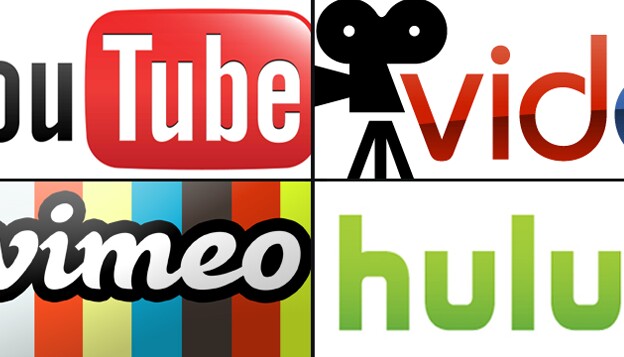 Let me ask a question regarding your marketing initiatives that might be of a sensitive nature for some: How much of what you have planned for in the way of campaigns, media channels, tradeshow activity, collateral, etc., is a holdover from last year and the year before and the year before that?
Let me ask a question regarding your marketing initiatives that might be of a sensitive nature for some: How much of what you have planned for in the way of campaigns, media channels, tradeshow activity, collateral, etc., is a holdover from last year and the year before and the year before that?
Now, how many of those activities are part of “status-quo” thinking – it’s just what we’ve always done? How many of these things are ineffectual? In today’s world of measurement metrics, internal analysis and ROI’s, some people would say non-producing activities would not be tolerated by upper management. Well here’s a news flash…these initiatives not only show up year after year but they’re staunchly defended by…upper management.
So why do companies keep investing in these programs and activities? Well, the thinking goes: “We’ve spent $ XX,XXX (and maybe another X) into this. Plus we’ve already invested XXXX hours into the program. We can’t stop now or we’ll have lost everything.” All that’s being done here is engaging in the sunk-cost fallacy that describes the tendency to throw good money after bad. Psychologically, the more you spend on something, the less you’re willing to let it go. But truth be told, once your money is spent, it’s gone. It has no relevance. What counts in terms of getting where you want to be tomorrow, is what that investment is worth to your organization today. It’s important not to consider past costs when making planning decisions, but to make decisions based on future costs and benefits.
There’s something else that marketers do that’s almost a bigger of waste of money than investing in ineffective programs and it’s really the genesis for this blog. What I’m talking about is the total lack of effort that’s put into making programs resonate as well as they could.
We all know that well-planned, well-executed strategic marketing is a lot of work. But then, so is filing for bankruptcy, selling off your assets and shuttering the business – which is the alternative to putting in the required effort. That makes me wonder why companies bother to invest in marketing activities and then put nearly zero effort into executing them. The creative is boring; the strategy is half-baked; the lackluster results are acceptable. This is just throwing good money after bad!
I stumbled onto a great example of this while clicking through the online exhibitor’s list for an upcoming industrial B2B trade show that covers a huge range of industrial services and equipment. Reading the self-authored company descriptions posted by each exhibitor, I was shaking my head in disbelief. Here are just two examples, and believe me, others were even less informative:
“Manufacturer & supplier of Cable/Wire Harness Assemblies, Power Supplies & Fans with Value-Added Capabilities.”
“Precision CNC turning and machining. Design and manufacturer of custom rubber products.”
There were literally dozens of entries like these and they were all written by the companies themselves! And they were free! The more I read, the more dumbfounded I became. Unique selling proposition? Strategic positioning? Differentiation? Okay, let’s shoot lower. Let’s try for just a coherent company description. How is any potential buyer supposed to even understand what value these companies could offer to them from those descriptions?
Trade shows are no small financial and time investment. Consider the possible costs: exhibitor fees, booth purchase, collateral materials, promotional giveaway, travel, meals, and man-hours spent on show logistics and for staffing the booth. So why then would any company that commits to a trade show deliberately and willfully flush that investment away with company descriptions like this:
“Extrusions – profiles large & small, tubing, rod, bar stock, co-extrusion, drilling and forming. Thermoforming. Pressure forming – deep draw, sheet thickness .030″ – .500″, high volume, long or short runs.”
This isn’t even a company description. It’s a list of processes, none of which are unique to this company! You may be thinking, “Rolf, you’re being too hard on these people. They’re doing the best they can.” Yeah, …NO.
Here’s a company description from another exhibitor at the same show:
“Recognized as one of the largest & most reliable service bureaus in the country, [Company] offers clients high quality/low cost tooling & manufacturing. We offer full service to assist our clients from concept through production, and have nationwide locations to serve you.”
At least it’s coherent. This probably took the company rep who (possibly, late at night in his/her hotel room) wrote it in all of about five minutes. Maybe the rep even copied it from the company brochure. The funny thing is that lazy marketers are often the first to wonder why their budgets and customers have disappeared.
Marketing is hard work. But that isn’t an excuse for not putting in your best effort. Or calling on professionals who know how to weave words into dollars.
While the above examples were for a tradeshow, throwing good money after bad certainly applies to other types of marketing initiatives as well, from ads to email campaigns. As a marketing firm ourselves, we don’t treat anything we do for our clients in a ho-hum fashion…because our clients deserve to get their money’s worth. Which is a lot more than what many companies do for themselves. Time to stop spending good money after bad.
 I saw a video over the holidays and it got the better of me so much so that I have to say something because these types of videos just need to stop being created by “marketers.”
I saw a video over the holidays and it got the better of me so much so that I have to say something because these types of videos just need to stop being created by “marketers.”
I’m talking about poorly conceived and produced online videos that we find on countless company websites and social media channels which are completely ineffectual. You know the kind of video I’m talking about: it starts off looking like it was homemade and it never gets better; the on-camera ‘talent’ has none; it doesn’t know when to end; there’s an information overload going on which leads to boredom; no clear understanding of who the audience is; and most importantly, the “WOW factor” is completely hidden or missing.
Unfortunately, this is exactly what some companies have haphazardly slapped together in the name of “meaningful content video.”
As we all know, online video content has just exploded over the past couple of years and it’s going to keep getting bigger in the foreseeable future. For example, did you know….
Yet we still have too many companies that create and post videos which are visual train-wrecks that unfortunately their customers and prospective customers will see. With that in mind, and so that the next video you develop has a chance to be all that it can be, let’s talk about what good videos have in common:
So whether you’re creating a testimonial, promotional, “how-to” or other type of video, the idea is to make sure that people find it interesting, worth spending the time to watch and that it leads to the desired next step. Repeated viewings of your video generally indicates a positive overall experience. Repeatedly having your video, or future videos, being ignored means, well, you know what that means.